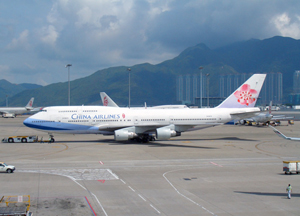 |
|
Please note: This summary is provided to help you understand the regulations. Consult the references provided for links to the full text of the regulations.
This section provides information about engine emission standards for aircraft. Related topics: Clean Air Act Who is covered by the regulations? EPA nitrogen oxides (Nox) emission standards apply to aircraft gas turbine engines with rated thrusts greater than 26.7 kilonewtons. These engines are used primarily on commercial passenger and freight aircraft. Greenhouse gas (GHG) standards address subsonic jet aircraft with a maximum takeoff mass (MTOM) greater than 5,700 kilograms and subsonic propeller driven airplanes (e.g., turboprops) with a MTOM greater than 8,618 kilograms. Examples include larger business jets such as the Cessna Citation CJ3+, the larger commercial jet aircraft – the Boeing 777 and the Boeing 787, and larger civil turboprop airplanes such as the ATR 72 and the Viking Q400. These are same types of airplanes covered by the international aircraft CO2 standard. The GHG standards apply to new type design airplanes when this rule becomes effective and to in-production airplanes on or after January 1, 2028. What is the purpose of the regulations? The Nox emission regulations discussed on this page contain standards that limit emissions of nitrogen oxides (Nox), a term which represents a family of seven compounds. Actually, EPA regulates only nitrogen dioxide (NO2) as a surrogate for this family of compounds because it is the most prevalent form of Nox in the atmosphere that is generated by human activities. Nox gases form when fuel is burned at high temperatures. They are emitted by aircraft, automobiles, trucks, boats as well as industrial sources such as power plants and industrial boilers. In high concentrations, Nox appears as a brownish gas. It is a strong oxidizing agent and plays a major role in the atmospheric reactions with volatile organic compounds (VOC) that produce ozone (smog) on sunny summer days. Nox compounds also combine with water to produce acid rain. For more information, see EPA's technical bulletin Nitrogen Oxides - Why and How they are Controlled. The GHG standards discussed on this page match the international airplane carbon dioxide (CO2) standards adopted by the International Civil Aviation Organization (ICAO) in 2017. The EPA GHG rules assures the worldwide acceptance of U.S. manufactured airplanes and airplane engines. Without this regulation, nations could ban the use of any airplane within their airspace that does not meet ICAO standards. The Clean Air Act (CAA) directs EPA to develop aircraft engine emission standards, when in their judgment aircraft emissions cause or contribute to air pollution that may endanger public health or welfare. When developing aircraft emission standards, EPA is required by the CAA to consult with the Administrator of the Federal Aviation Administration (FAA) and prohibits EPA from changing aircraft emission standards if such a change would significantly increase noise and adversely affect safety. EPA began regulating the emissions from aircraft engines in 1973. Since that time, they have worked with the FAA and later with the International Civil Aviation Organization (ICAO) to develop international standards and other recommended practices pertaining to aircraft engine emissions. ICAO was established in 1944 by the United Nations in order that international civil aviation may be developed in a safe and orderly manner. ICAO’s responsibilities include developing aircraft technical and operating standards, recommending practices, and generally fostering the growth of international civil aviation. The United States is currently one of 190 participating member States of ICAO. The most recent emission regulations published by EPA (final rule) contain standards and related provisions for Nox control that were previously adopted by ICAO. This includes two new tiers of more stringent emission standards for oxides of nitrogen (Nox):
The standards will apply differently depending on the date the engine model received its original type certificate as follows.
With the 2012 rule, EPA also adopting several changes that would affect all aircraft gas turbine engines that are subject to current emission requirements:
On January 11, 2021, EPA finalized greenhouse gas (GHG) emission standards that apply to certain new commercial airplanes, including all large passenger jets. These standards match the international airplane carbon dioxide (CO2) standards adopted by the International Civil Aviation Organization (ICAO) in 2017. ICAO’s 2017 standards are based on the ICAO’s carbon dioxide metric system. This metric is a measure of aircraft fuel burn performance created by considering fuel burn at three different points within an aircraft’s flight at a specific altitude. The metric is specifically concerned with the emission of carbon dioxide and nitrous oxide. The EPA’s proposed rule follows the ICAO’s standards and applies to the manufacturers of new aircraft and aircraft engines rather than operators, such as airlines. EPA Transportation and Air Quality - Aircraft. This page provides information about air pollutant emissions from aviation. It includes regulations, guidance, and other information related to aircraft. Federal Aviation Administration's (FAA) Emissions and Dispersion Modeling System (EDMS). A useful tool for aviation emission inventory analysis. US EPA Fact Sheet. Final Aircraft GHG Emission Standards (2020).
|
 Engine Emissions (Aircraft)
Engine Emissions (Aircraft)